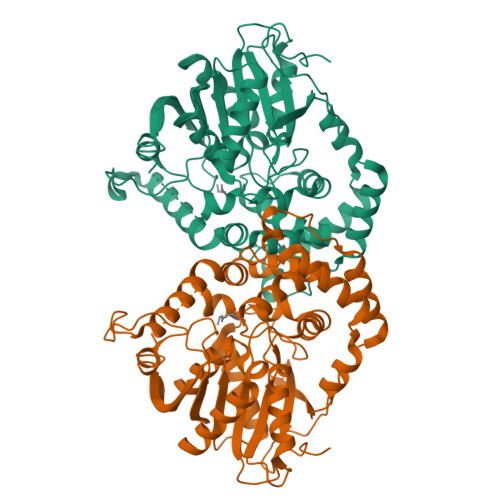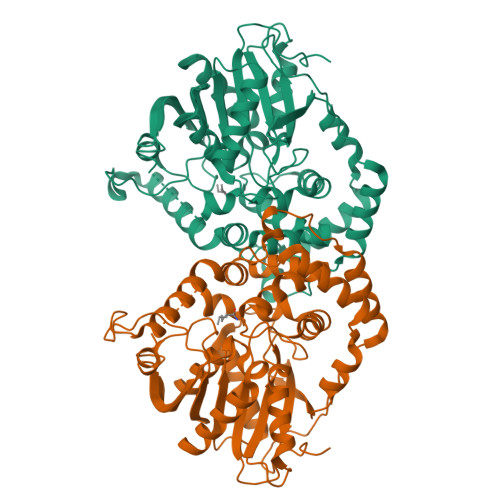Directed evolution of an enantioselective epoxide hydrolase: uncovering the source of enantioselectivity at each evolutionary stage
Reetz, M.T., Bocola, M., Wang, L.W., Sanchis, J., Cronin, A., Arand, M., Zou, J., Archelas, A., Bottalla, A.L., Naworyta, A., Mowbray, S.L.(2009) J Am Chem Soc 131: 7334-7343
- PubMed: 19469578
- DOI: https://doi.org/10.1021/ja809673d
- Primary Citation of Related Structures:
3G02, 3G0I - PubMed Abstract:
Directed evolution of enzymes as enantioselective catalysts in organic chemistry is an alternative to traditional asymmetric catalysis using chiral transition-metal complexes or organocatalysts, the different approaches often being complementary. Moreover, directed evolution studies allow us to learn more about how enzymes perform mechanistically. The present study concerns a previously evolved highly enantioselective mutant of the epoxide hydrolase from Aspergillus niger in the hydrolytic kinetic resolution of racemic glycidyl phenyl ether. Kinetic data, molecular dynamics calculations, molecular modeling, inhibition experiments, and X-ray structural work for the wild-type (WT) enzyme and the best mutant reveal the basis of the large increase in enantioselectivity (E = 4.6 versus E = 115). The overall structures of the WT and the mutant are essentially identical, but dramatic differences are observed in the active site as revealed by the X-ray structures. All of the experimental and computational results support a model in which productive positioning of the preferred (S)-glycidyl phenyl ether, but not the (R)-enantiomer, forms the basis of enhanced enantioselectivity. Predictions regarding substrate scope and enantioselectivity of the best mutant are shown to be possible.
Organizational Affiliation:
Max-Planck-Institut für Kohlenforschung, Kaiser-Wilhelm-Platz 1, D-45470 Mulheim/Ruhr, Germany. reetz@mpi-muelheim.mpg.de



















